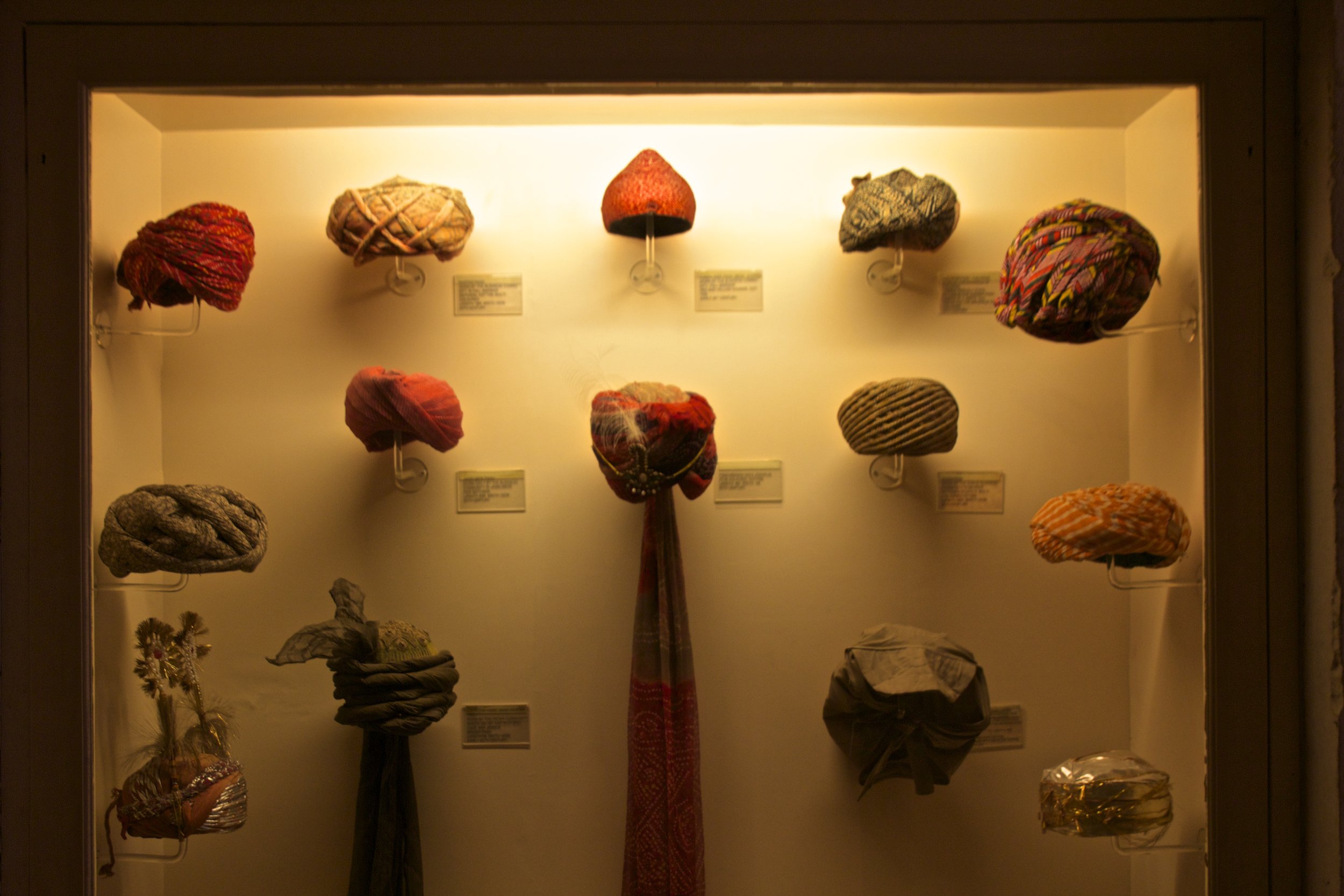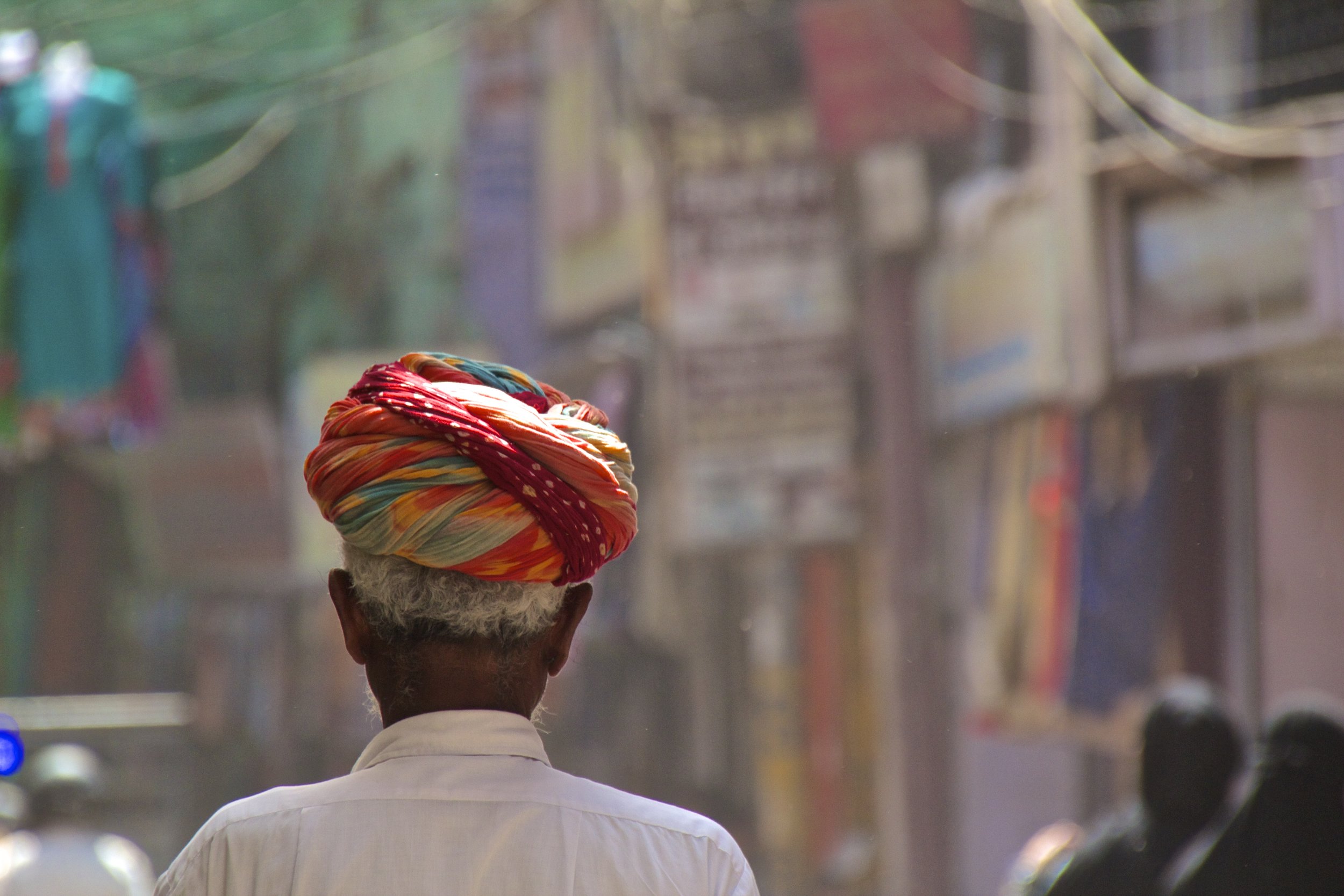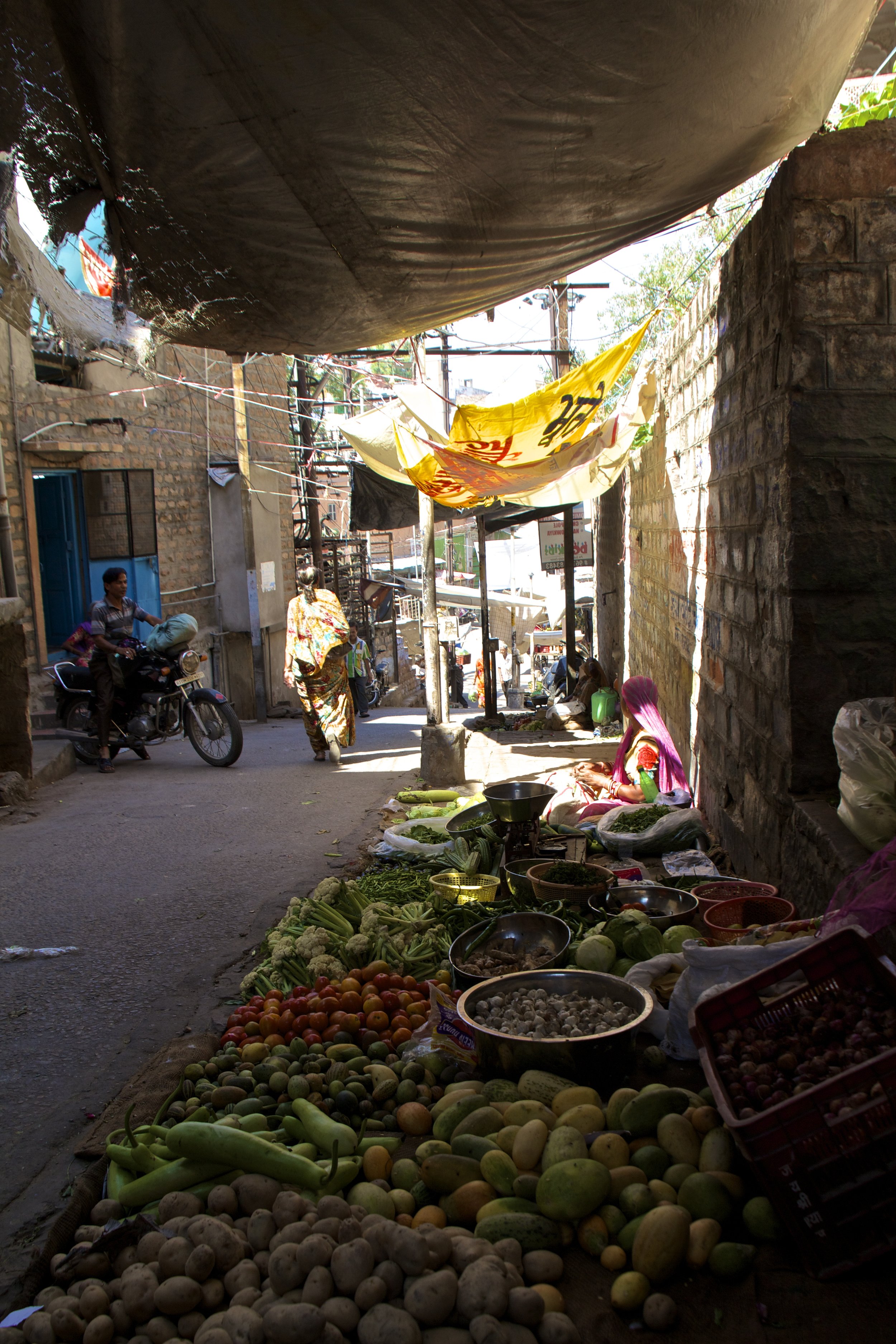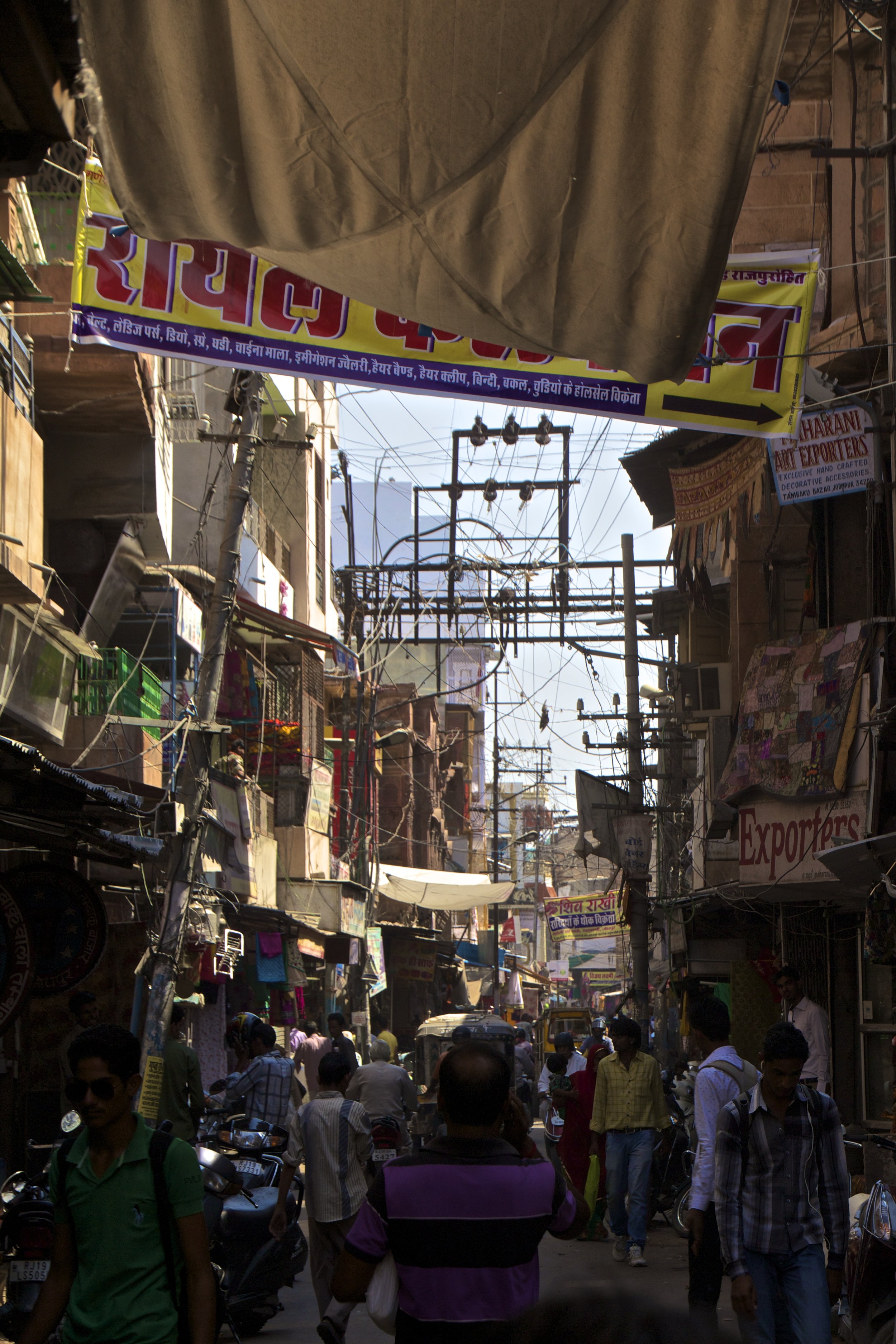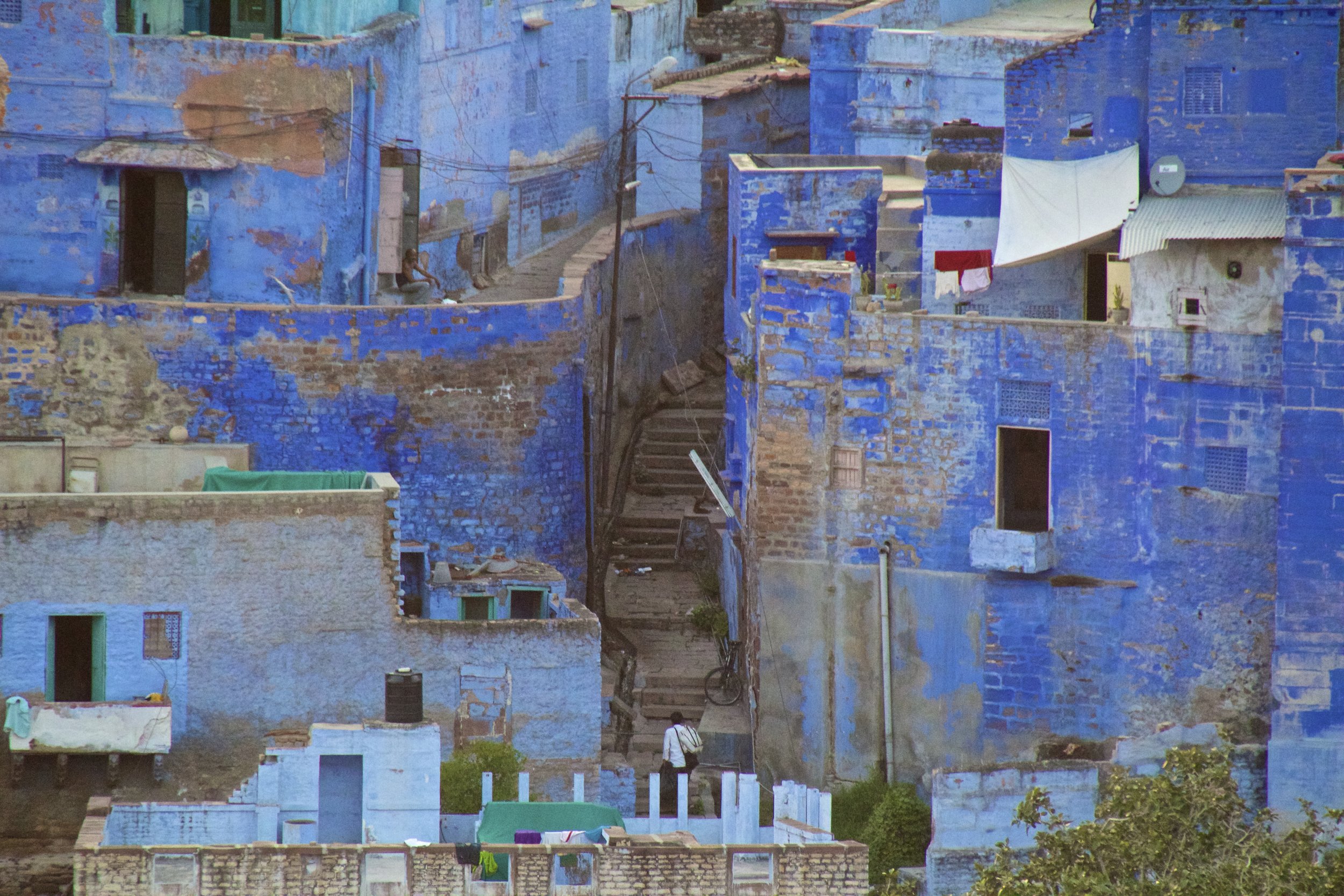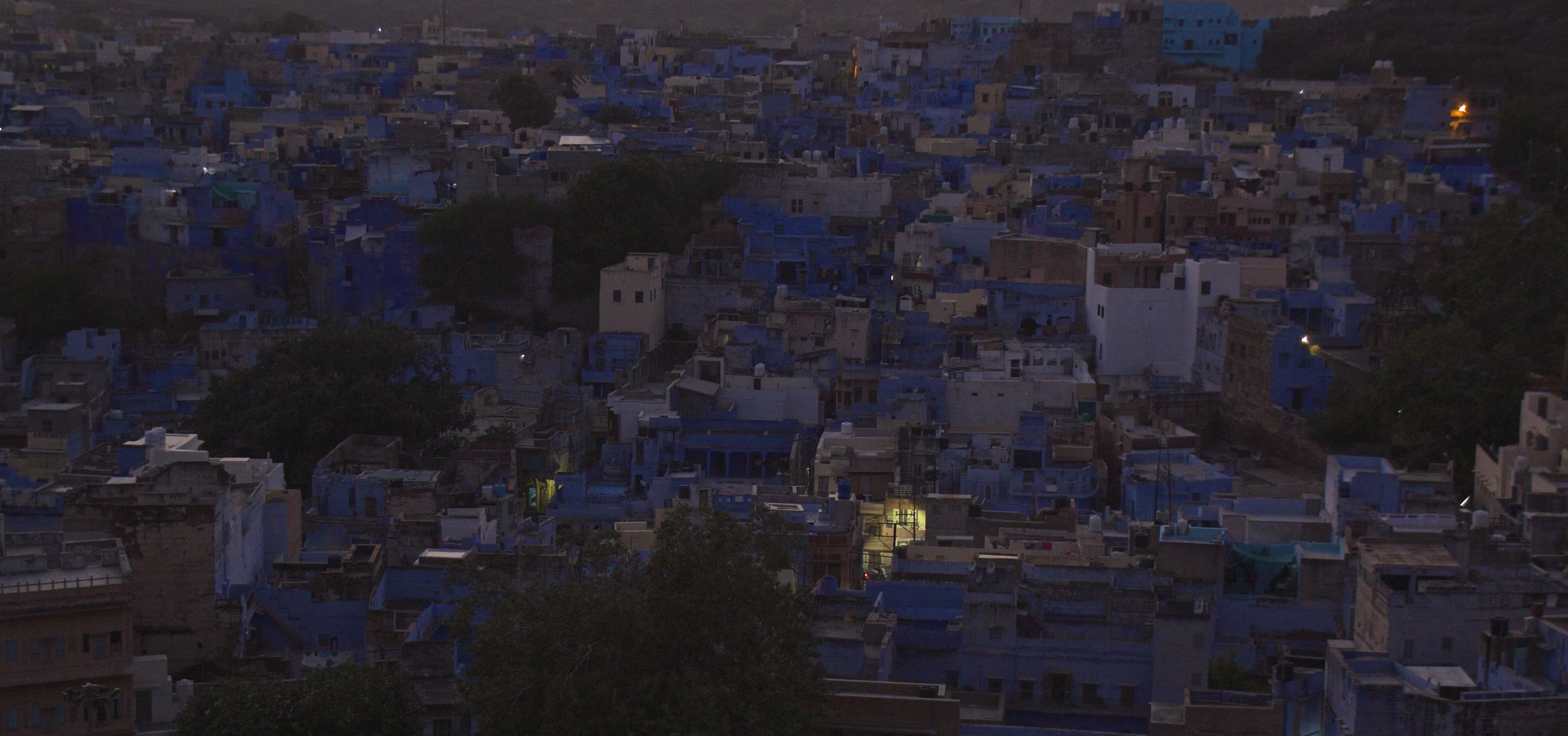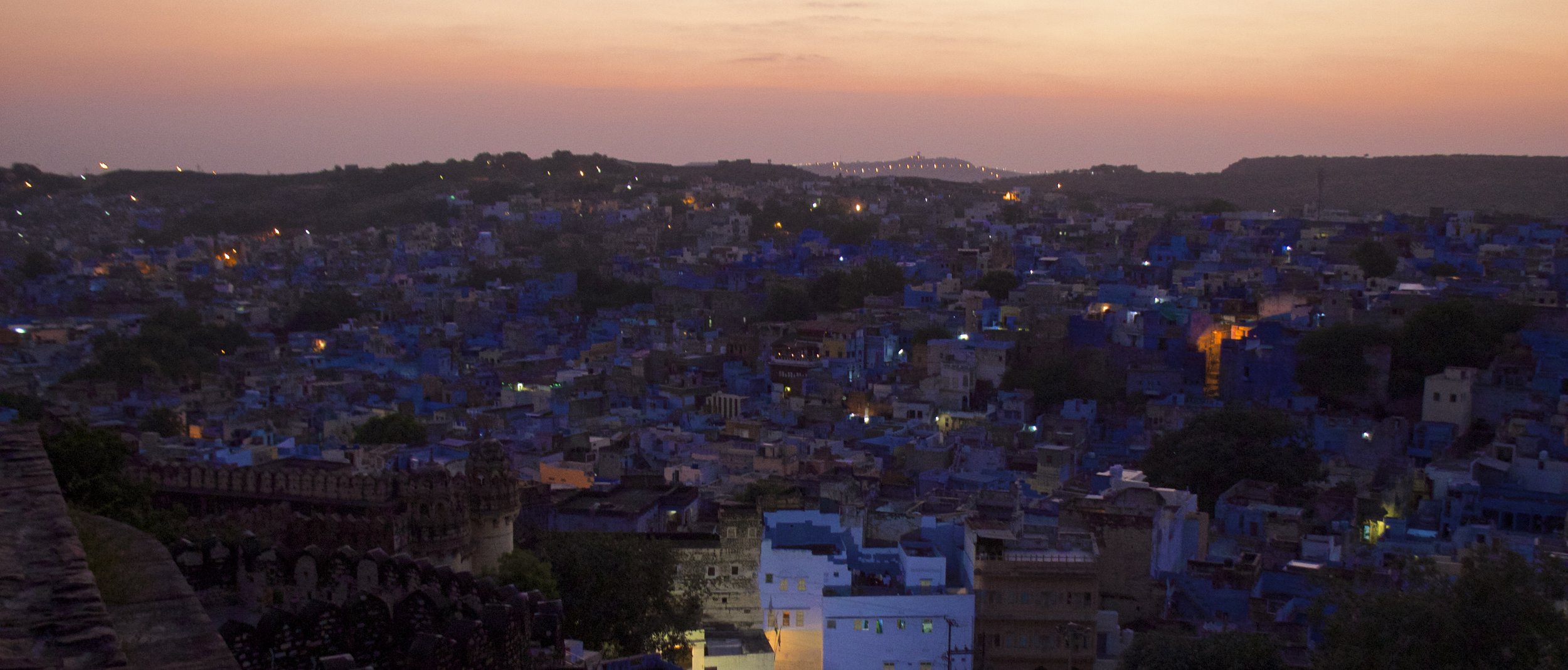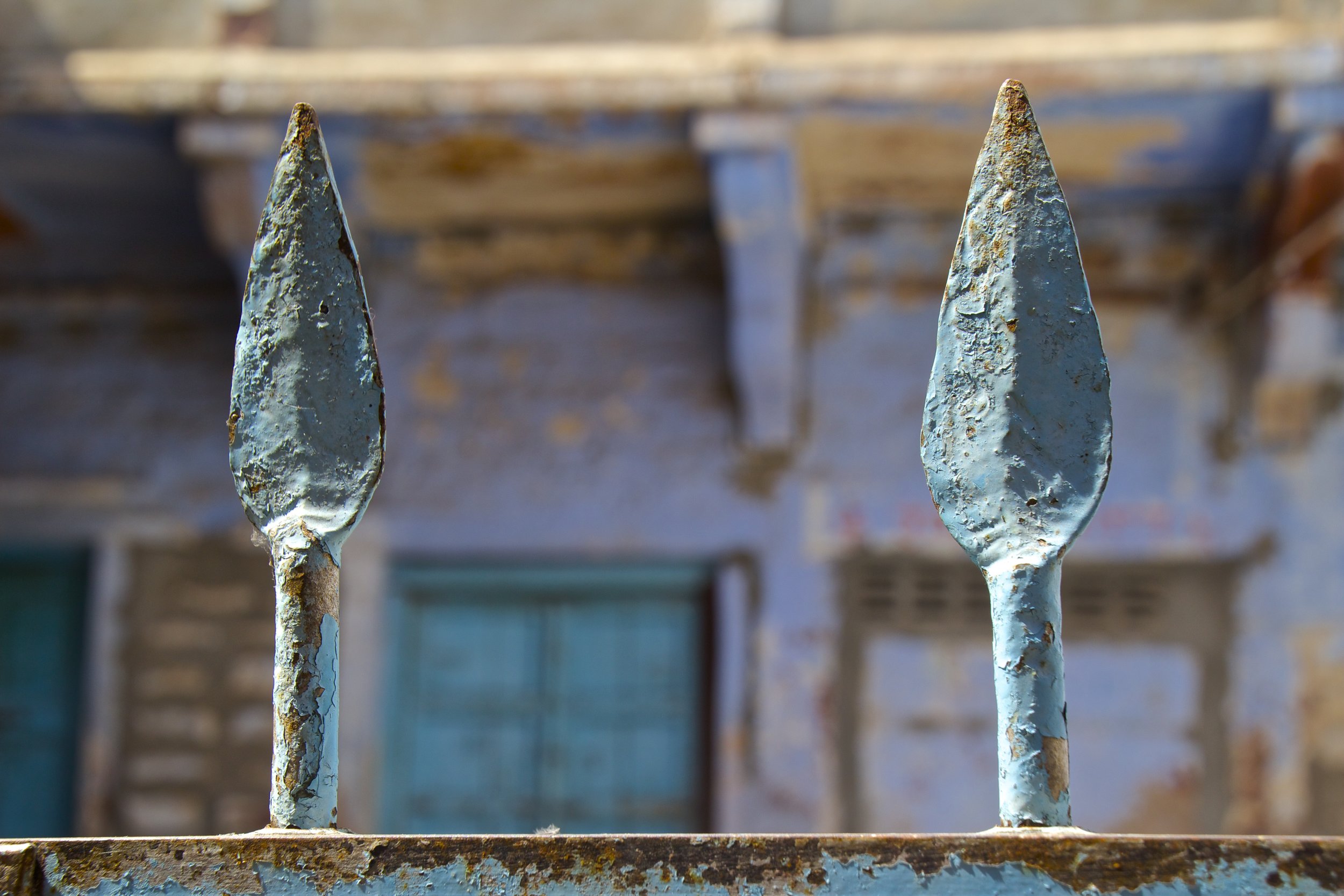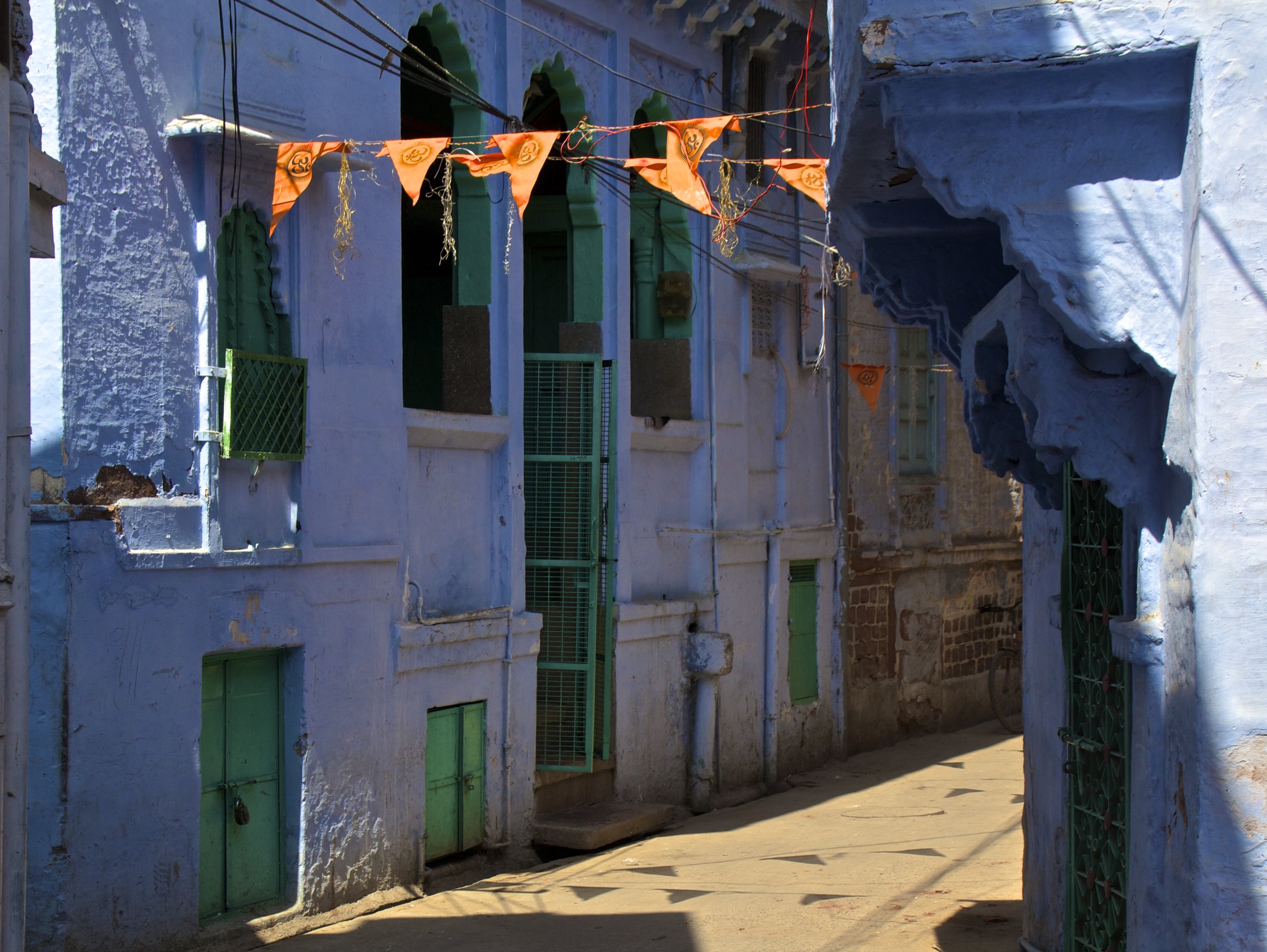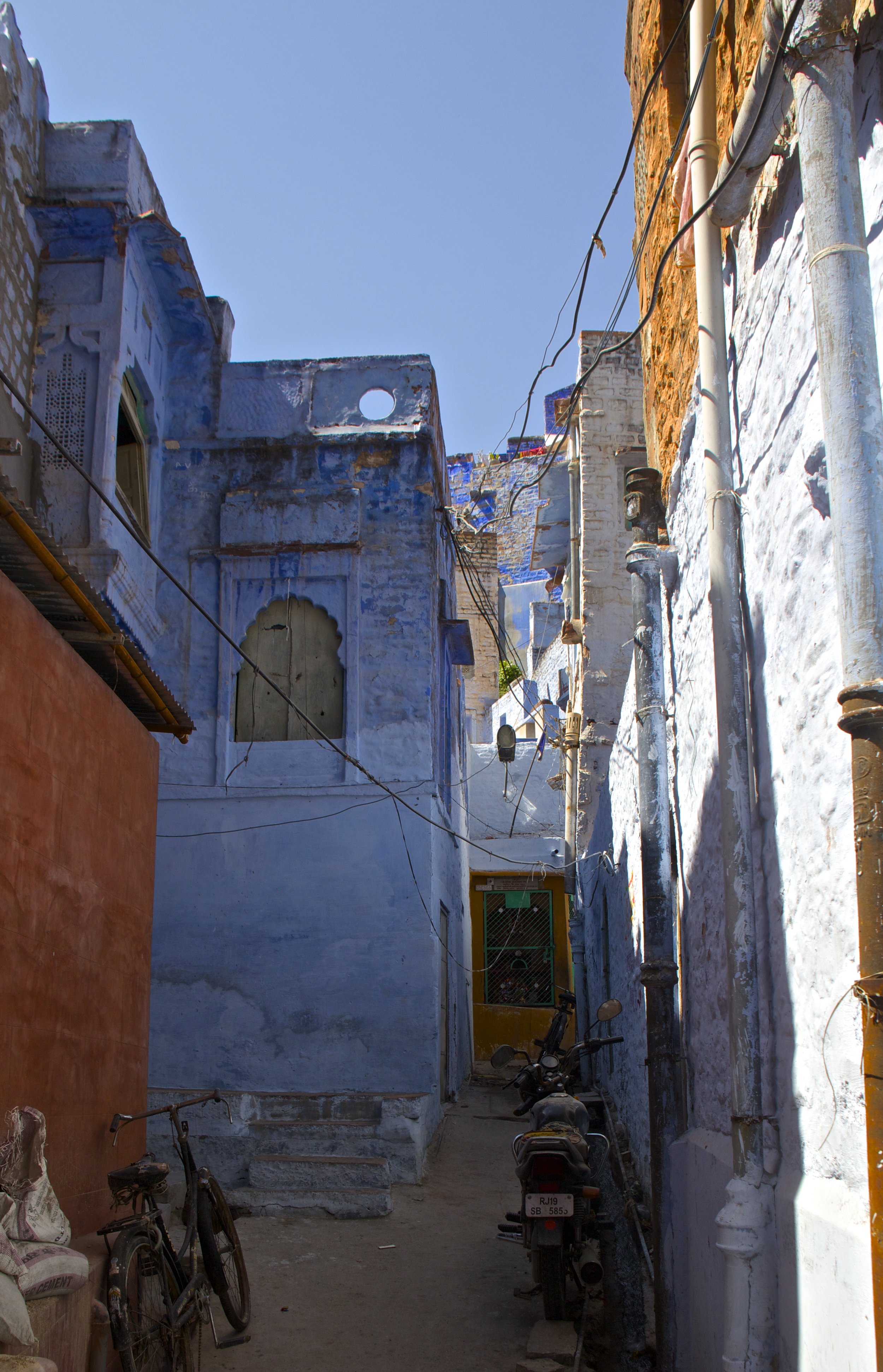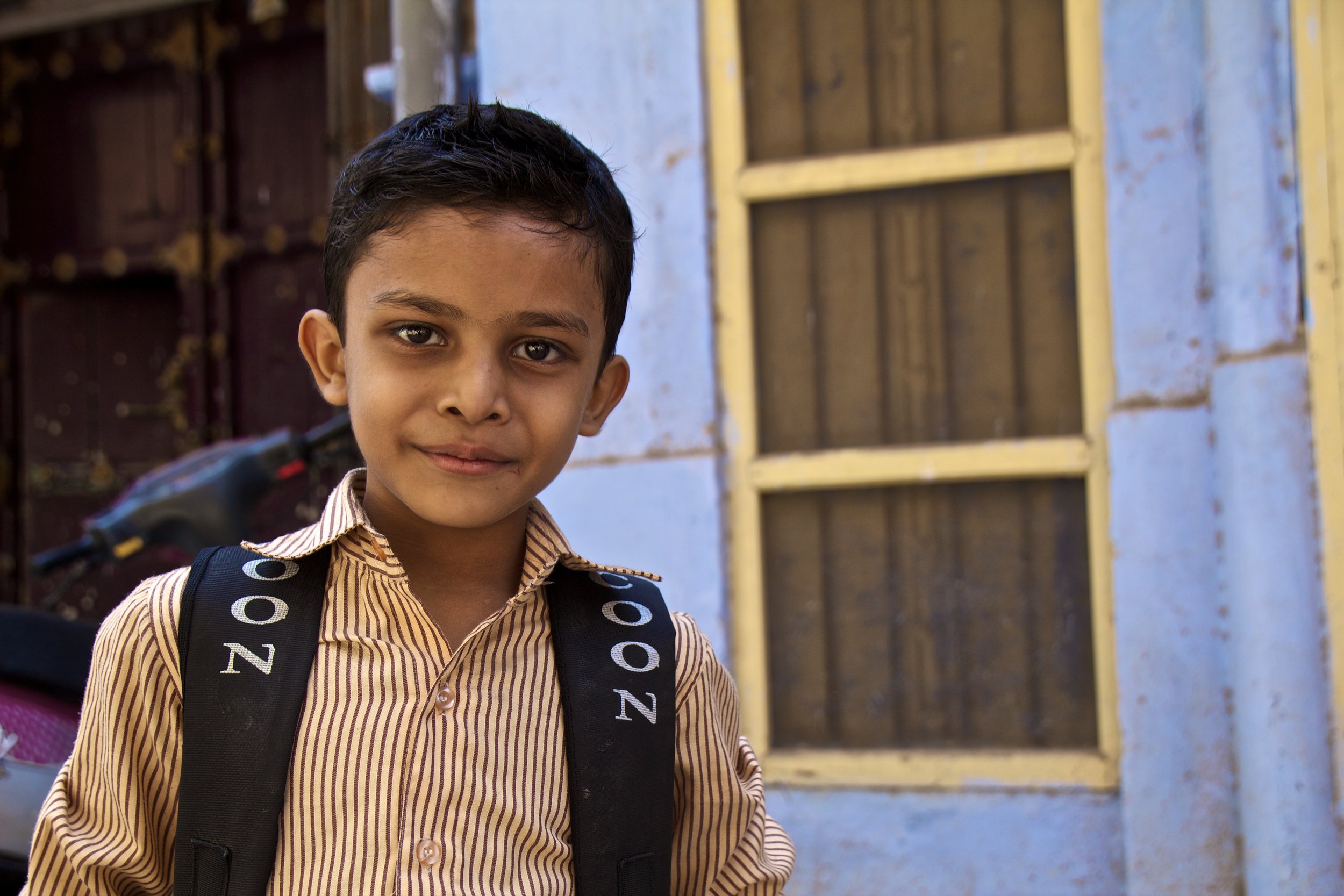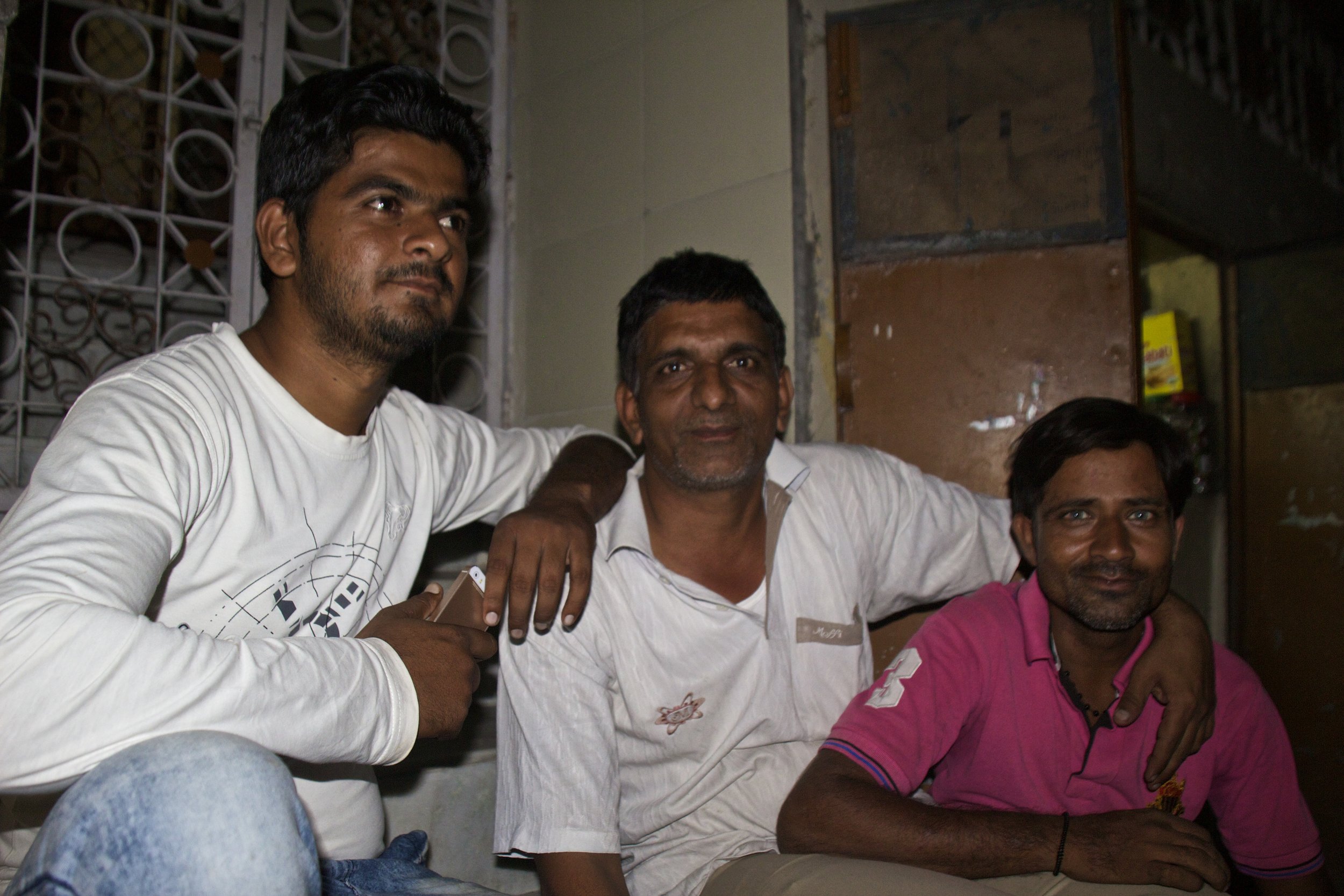Jodhpur, Rajasthan
The Blue City
This was a highly anticipated destination for me. A long, long time ago, in my suburban, Midwestern, teenage angst, amidst my endless internet searches for all the far away places I would go one day (and boobs), I came across the work of a photographer named Steve McCurry. He had taken the most amazing photographs of places I had never even heard of, one of them being a city that was painted entirely blue, in some far off land. I was enthralled as I clicked through the pictures of children running down the distinct, baby blue alleyways. I don’t remember ever bothering to see exactly where the photos had been taken, as the practicalities of actually getting to places like this had no application for the younger me, who was trapped. The older me however, made a point to dig these photos back up, and figure out how to get himself there.
The name of the blue city is Jodhpur. Jodhpur is the "2nd city" of the West-Indian province of Rajasthan. Rajasthan, the largest province in all of India, is mostly arid and dry, similar to the climate of Southern California. By the time it reaches the Pakistani border, it has become a full-blown desert. The topography of the region isn’t much to look at, but the culture is intriguing and vibrant. Brightly colored turbans and epic-ly curled mustaches are fashion fixtures on every man walking through the streets. Women have bright eyes, veiled by vibrant silky cloth. People really don't get much more photogenic.
So let’s disembark from my Rajasthani fantasies and get into the reality of it all.
When I got off my train in Jodhpur it was very late at night. As I walked out of the train station, a man was pestering me to take his tuk-tuk. After a month in India, I make a point of never doing business with the first guy that runs up to me. These guys are always scammers who wait around at train stations for tourists. I tried to talk to other tuk-tuk drivers but they all offered me prices that were even higher. I was suspicious that they were colluding to force me to take the original man’s tuk-tuk. The jury is still out on this conspiracy theory, but with no other options I had to go with the first guy. He charged me 200 INR (3.03 USD) for a ride that should have cost 70 (1.06 USD). Jodhpur was off to a rough start.
Now, I don't mind paying a high price, as long as it is the correct price. Tuk-tuk drivers tried to pull this sort of thing on me quite a few other times in Jodhpur, but I never allowed myself to be a victim of it again. Ever. This was officially my last straw of India. I was so sick and tired of being ripped off. On the outskirts of a city like Jodhpur, it's a long walk to get anywhere, so tuk-tuk drivers will speak to you as if you have no choice but to do business with one of them. Well there's an alternative: walk! There will undoubtedly be another tuk-tuk that passes you within 2 minutes, but if there isn't, don't worry—Rajasthan is one of the safest provinces in India. It's a good place to walk.
Hostel Review: Zostel
Price: 300 INR (4.63 USD) per night
I stayed at a hostel called Zostel. There are a chain of Zostels in different Indian cities, so I thought it was a safe bet that it would be good. In this neck of the woods, institutions are usually more reliable than sole proprietorships. As it turned out, I was correct. The hostel itself was great, but there was one problem: the location. The fact that it was on “Airport Road” should have been a dead giveaway. It was a 70 INR (1.06 USD) tuk-tuk ride into the actual city, but usually it would take me snarling at a few drivers before they gave me the “Indian price” which is code for the “non-rip-off price”. I was really starting to get mean with some of these drivers.
If I could go back and do it again though... I’d probably be meaner.
Guesthouse Review: Keser Heritage Guesthouse
Price: 492 INR (5.60 USD) per night
I would eventually come back through Jodhpur on my way to Mumbai. The 2nd time around, I took the recommendation of a friend and stayed at Keser Heritage Guesthouse. It was in the very heart of Jodhpur, with a great view of the fort, but that was the only perk. The wifi didn’t work, and the rooms were hot and stuffy like coffins. The staff was pretty helpful and friendly though, which I appreciated. As I was checking out one of the workers was showing me out and said “Cholo Pakistan!”
“... sorry, what?” I responded, tired.
He told me it means ‘Let’s go to Pakistan!’ It was a joke he liked to make. Saying that you are going to Pakistan is even more ridiculous in India than it is in America. I lol'd.
Jodhpur Itinerary
I was feeling a little bit disenchanted with Jodhpur already, but I still had 2 main objectives for my time there.
1. The Blue City
2. The Fortress
I made multiple rounds of both of them, so for organizational purposes, let’s begin with the fortress.
Mehrangarh Fortress
It's foundations were laid in 1459 on the orders of Jodhpur's founder, Rao Jodha. Standing 410 feet (125 meters) above the rest of Jodhpur, Mehrangarh is one of the biggest fortresses in all of India. That's about as much of the history as I feel is interesting, so let's get back to the present.
I didn’t actually get to go into the fortress until the 2nd time I visited. The first time I visited, after my long tuk-tuk ride over, and my long hike up to the gates, they turned me away. It turned out that I had neglected to buy a ticket at the bottom of the hill before making the climb. When I arrived at the top it was 4:57pm. They stopped selling tickets at 5:00pm so, alas, I was out of time. The guard was kind of a dick about it too. I was not happy. Here are some shots from the ride up to the fortress:
The 2nd time I visited I came early in the day. The ticket to get in cost 400 INR (6.05 USD). There was an audio tour available if I paid extra and surrendered my passport to them as collateral for the headset. Seeing this fortress had already been expensive enough without all that though, and couldn’t be bothered to give them my passport, so I declined the audio tour. Here's a few pictures from around the fortress, outside of the actual museum:
The fortress, though impressive to look at from down below in the city, was less impressive to actually explore. This is mostly due to the fact that almost everywhere that I wanted to go inside the fortress was blocked off. It also didn't help that the guards who patrolled the fortress were all on a huge power trip. The exhibits in the museum were interesting though… I guess. Most of them were artifacts related to Indian fashion and extravagance from hundreds of years ago – lifestyles of the rich and famous. There was a collection of litters (that is the word for thrones that were carried on the shoulders of servants) and an outrageous assortment of turbans worn by the passengers of these litters.
Litters:
Turbans:
Interior:
I wasn’t feeling overly enriched by this small collection of artifacts, so I decided to do some off-roading. I found a few cool little ponds and temples, tucked away in the nooks and crannies of this fortress, but the best part of Jodhpur was hiding in plain sight a few hundred meters below.
The Blue City
This is what I had really come to see. But before I get into the actual pictures of it, let me address the elephant in the room. WHY is this city painted blue? Good question. The short answer is that we're not exactly sure. It could be any (or all) of the following reasons:
Rajasthan is really hot, and blue paint helps to maintain a cooler temperature inside the houses.
The chemicals in the blue paint they used to paint the city deters bugs, like mosquitoes and termites.
Blue is the color of the Brahmins, which is India's priestly caste. Historically, many (if not all) of these houses belonged to them.
In my initial walks through the city, I was crestfallen to discover that not ALL of the city is blue. A lot of Jodhpur looks pretty standard. Here’s a few shots of the not blue city.
I was feeling pretty disappointed. But then, after I was turned away from Mehrangarh Fortress, (the 1st time) I did some sneaking. Sunset was already in progress, and I knew that there were no shortage of beautiful views to be had from this behemoth of a fortress, so I was looking for a stoop with a view. I talked my way past a guard and snuck through an elevated dirt lot that was within the castle walls. A couple utility vehicles were the only inhabitants of this lot.
Once I reached the other side of this lot I crawled down, through the thorny bramble, to a small pond. It was hidden away on the side of the fortress. Off in the distance I could hear the thumping base of Hindi dance music whafting up over the city. Eventually I found my way up to a ledge with a nice view of Jodhpur, and that was when I saw it. The blue city is real. Wherever I had been earlier in the day, I had been lost.
I sat on that ledge until nightfall, watching the West Indian sun slide down over the horizon. The hue of blue buildings changed as they went from daylight, to twilight, to streetlights. It was seriously beautiful. Maybe Jodhpur wasn't so bad.
I went down into the city that night via the fortress’s back door. That’s when I really discovered the blue city. It’s kind of tucked away. I didn’t see any other travelers wandering around, so I wondered how many people actually ended up venturing over this far. Jodhpur is pretty big. It would be easy to never come here. It was a beautiful walk, even in the dark, but I knew that I had to come back to see it in the light of day.
I went to the same point, and did roughly the same walk the next day. Here’s some pictures from that walk:
I was pleasantly surprised at how nice the people were to me. It took me about 2 minutes to get scammed when I first arrived in Jodhpur, and that had colored my expectations about its inhabitants. Here though, tucked away in the shade of Mehrangarh Fortress, far from the main “touristy areas”, I experienced a great deal of kindness. They acted as if they hadn’t seen many travelers before, curiously ogling me. Sometimes I would catch beautiful glimpses into these people’s homes, and I would try to take a picture through a window or gate. More often than not, the residents of said home would catch me in the act (maybe I wasn’t being as sneaky as I thought) and invite me in for a more thorough photo shoot. One group of men even shared their meal with me, which was profoundly kind. I was very aware that I didn’t deserve this type of hospitality. I was a sweaty, smelly, hairy traveler. To my credit though, I did have a mustache at the time. Perhaps that was what won over their trust.
Like many other places in India, the most common request I received was to take pictures of people. I have quite a lot of portraits from Jodhpur. Sometimes the people in the pictures, despite having just asked me to take them, didn’t actually want to see them. Other times they rushed to my side to see their photo shoot play out on the screen of my camera. “Do not delete!” one man said to me, giving me the thumbs up very seriously.
My favorite portrait of all of them however, was this one. THIS is a mustache, folks. Rajasthan does it right!
From Jodhpur, I hadn’t yet made up my mind as to what exactly I would do next. It was a last-minute, game-time decision, and I decided to head farther west to a city called Jaisalmer. This is actually just about the farthest west you can go in India before you run into Pakistan. It is the last desert outpost of India. Beyond that is nothing but desert before the border. It was going to be a 6 hour train ride from Jodhpur.
Next stop: Jaisalmer, and the Thar Desert






























